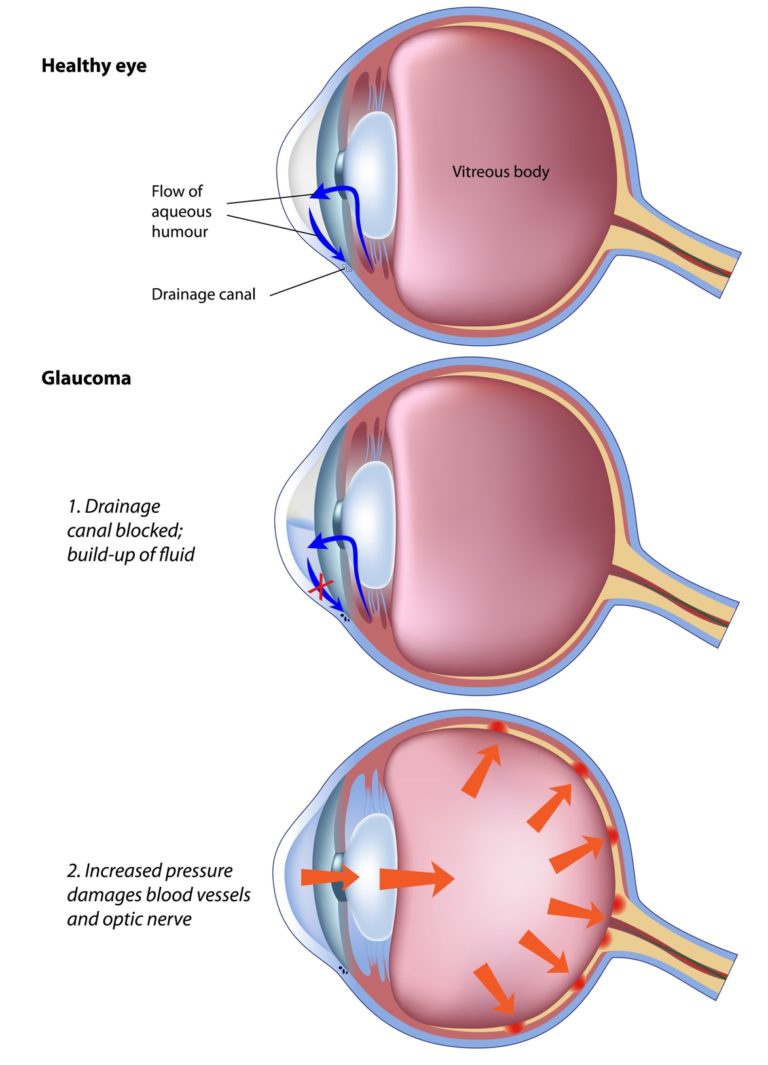What is Glaucoma?
Glaucoma is an eye disease, which has earned notoriety as “The Silent Thief” as it snatches away the vision completely and suddenly. The dangerous aspect of the disease is that it is, many a time, symptomless requiring periodic eye examination, at least once a year. It is one of the leading causes of blindness worldwide. Indians reflect a high incidence of the disease as around 15 lakh people have already lost their vision to the disease.
Development of Glaucoma

Glaucoma occurs when the internal pressure of the eye goes up to the extent of causing harm to the Optic nerve which is responsible for transmission of visual signals to the brain. This entails irreversible loss of vision. Generally both eyes are involved, and the disease is hereditary. If your brother or sister has acquired the disease, there are chances for you to contract the disease. In such a case, get your eyes examined as soon as possible.
The fluid ‘aqueous humor’ nourishes the eye by flowing across the front portion of the eye. It drains out of the eye continually to maintain the circulation and intra-ocular pressure. In people with glaucoma, the drainage pathway is interrupted either to a certain extent or completely affecting the balance in eye pressure. This condition sows the seeds of a gradual vision loss which goes unnoticed, even for several years, unless examined.
Types
Open-Angle Glaucoma
It is a common form of the disease which generally manifests no symptoms at early stages. When the symptoms show up, the disease would have already progressed to a great extent. It is only during this stage that patient becomes conscious of the disease and sustains loss of peripheral or side vision. The sharpness of vision is not affected until advanced stages of the disease.
The comforting part is that your doctor will be able to read the initial warning signs of the disease during the routine clinical examination.
The angle where clear portion of external eye, namely cornea, meets the coloured portion iris is normally wide enough in this disorder but the problem lies deeper in the drainage system. People who have crossed the age of 50 are more prone to this form of the disease.
Acute Angle closure Glaucoma
The obstruction in the drainage pathway is due to narrow angles between cornea & iris. Acute onset of the disease can be prevented by a walk-in walk-out laser procedure (YAG Iridotomy) which involves creating pathway in iris for aqueous humour to drain.
Treatment
Once diagnosed lifelong monitoring of glaucoma is vital to preserve the vision. Eye drops is the first line of therapy which needs to be administered lifelong. Other modalities of treatment are pills, laser surgery and traditional surgery.
